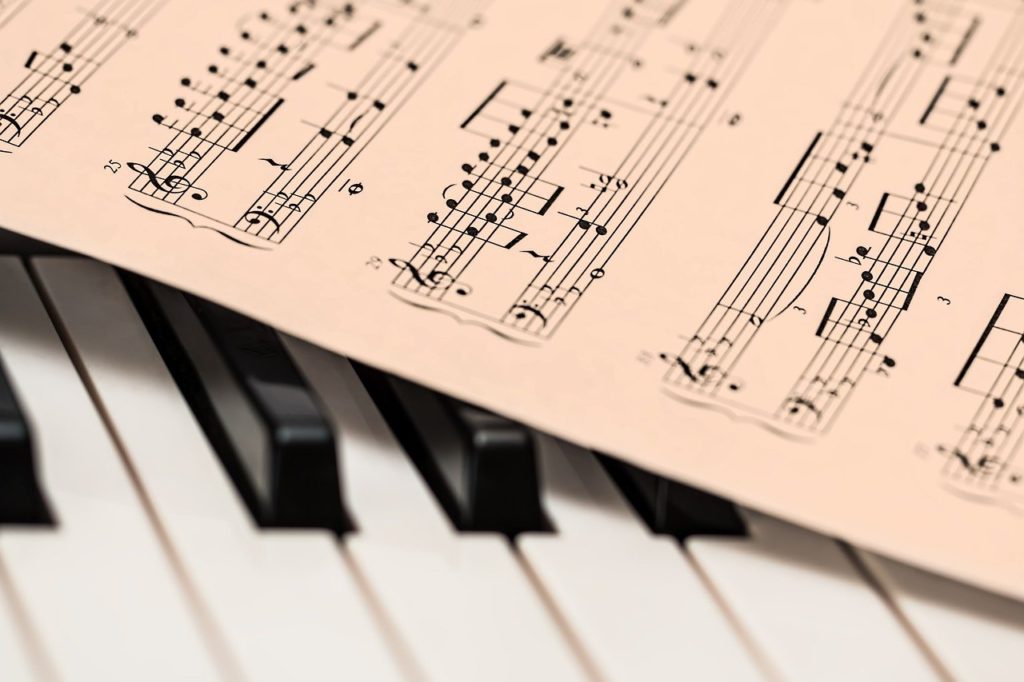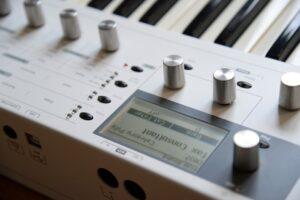Estimated reading time 2 minutes
Table of Contents
Do My Hands' Sizes Really Affect Learning Performance on the Piano?
“Do my hands’ sizes affect learning performance on the piano?” Yes, your hand’s size can affect your ability to play certain techniques and perform some types of music. Read more to find out how your hand’s size can affect your ability to perform and what you can do about it.
This post uses musical terms. For definitions, see the Glossary at the end of the article.

How My Hands' Sizes Affect Learning Performance on the Piano: Large Intervals
“Do my hands’ sizes affect learning performance on the piano?” Yes, it impacts your ability to reach large intervals and challenging chords. Such as:
- Fast octaves can be challenging for anyone, which is one reason why many pianists consider fast octaves to be a virtuoso skill. Basically, octaves can only be fingered with the thumb (#1) and pinky (#5) fingers. Therefore, it should be no surprise that your hand’s size impacts your ability to play octaves quickly. If you have smaller hands, this may limit your ability to play elite level pieces.
- Also, hand size can impact your ability to reach larger intervals such as an interval of a tenth. An interval of a tenth spans ten white keys on the piano (thus the name). If you find octaves difficult, tenths will be out of the question. This will impact what types of music you can play. For example, Liszt (who wrote his music with his concerts in mind) had meat hooks for hands, so he used lots of tenths. This means that Liszt’s music will likely be out of your reach (literally) if you have small hands.
- Likewise, playing certain types of complex chords can require a big stretch. This might limit your ability to play the music of composers such as Rachmaninov or Joplin if you have a small hand span. And if you have tiny hands, even the interval of a sixth can be uncomfortable to reach. In that case, you’ll probably need the help of a good piano teacher to help you find workarounds.

How Do My Hands' Sizes Affect Learning Performance on the Piano and What Can I Do About It?
“Do my hands’ sizes affect learning performance on the piano?” While small hand size can limit your ability to play large interval stretches, it doesn’t mean you can’t be a good pianist.
With solid technique and lots of practice you can become skilled at keyboard instruments. Having a good teacher helps too. So, don’t let your hand span keep you from playing the instrument you love.
Having said that, what can you do if you have small hands but want to play the music of composers like Gershwin or Liszt? Read this next post for tips on how to roll chords and arrange piano music so it works for your hand size:
Related Posts
- How Does Your Brain Learn to Play the Piano with Two Hands?
- Do I Really Have to Learn Music Theory to Learn How to Play Piano?
- Should I Learn to Play the Piano One Hand at a Time or Simultaneously?
- How Can Legato Notes Be Played Staccato?
- Why Can I Play Piano Hands Together but not Separately?
© 2023 Geoffrey Keith
Join me for in-person or online lessons today!
Back to the All-Purpose Music Tips and Topics category blogs page
Glossary
Do You Need Help Learning How to Harmonize?
Have you ever marveled at how some people can easily sing with a beautiful tone? Do you need help learning how to harmonize in tune? Good news! Vocal harmonizing can be learned, and the sing-along soundtracks will help. Click to find out how it works. Estimated reading time 3 minutes.
Read MoreCan I Learn to Play Piano with a Mini Key Keyboard?
“Can I learn to play piano with a mini key keyboard?” Electronic keyboards come in all sizes, including keyboards that have different sized keys. If your keyboard has keys that are smaller than an adult finger, it has mini keys. Will mini key keyboards be a good choice for practicing for your piano lessons? Read more to find out. Estimated reading time 2 minutes.
Read MoreIs There Any Method to Help with Writing Descriptions?
“When I write, my descriptions seem lifeless. Is there any method to help with writing descriptions?” When it comes to creating vibrant descriptions in your writing (or songwriting), there's a powerful method that can make a world of difference. You need to avoid static descriptions. You do this by using action words. Keep reading to find out how it works. Estimated reading time 2 minutes.
Read MoreExploring the Music Themes and Leitmotifs of Star Wars
Do you love the “Star Wars” soundtrack and want to understand it better? Are you a budding composer and want to understand leitmotifs and how to write them? It doesn’t matter if you’re a composer or just a fan, exploring the music themes and leitmotifs of “Star Wars” will be a rewarding experience. Read more to understand themes and leitmotifs, and to get indexed lists of each theme and where it occurs within the film. Estimated reading time 5 minutes.
Read More




